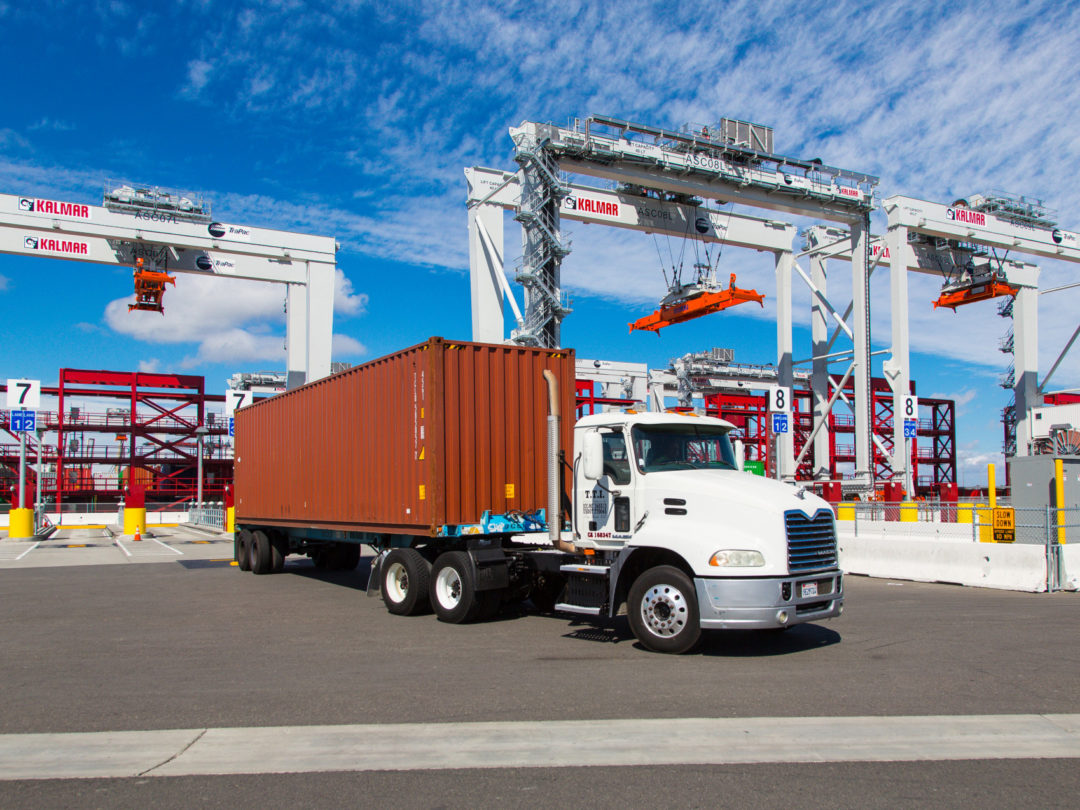
Even the strongest narrative about international trade flows can shift with jarring suddenness.
For the last 30 years or so, the conventional wisdom about U.S. seaports has centered on the increasing dominance of the West Coast, particularly the ports of Los Angeles and Long Beach. The coming Century of the Pacific, during which trade patterns were expected to overwhelmingly favor goods from East Asia, was said to ensure the growth of West Coast container terminals at the expense of facilities on the Atlantic and U.S. Gulf. Further bolstering that trend was the fact that ever-larger containerships had to terminate their trans-Pacific voyages on the West Coast because they couldn’t fit through the Panama Canal.
Indeed, for many years combined volumes at the ports of L.A. and Long Beach made that complex the busiest center of container operations in the country. Notwithstanding the ups and downs of economic cycles, they haven’t stopped expanding their facilities to cope with what’s sure to be even greater volumes in the years ahead.
West Coast ports have continued to thrive in the 21st Century, but the narrative of dominance is no longer quite so clear. With the opening in 2016 of a new and wider set of locks at the Panama Canal, bigger containerships were able to travel across the Pacific from Asia all the way to the U.S. East Coast. Now shippers had an alternative to unloading their containers on the West Coast, then moving them across country by truck or rail. The all-water option might be significantly slower than intermodal transit, but it’s also significantly cheaper. And it avoids the congestion that often occurs at intermodal terminals, inland railyards, and on the highways.
One development that has put a damper on trade with China — by far the largest source of goods moving across the Pacific to the U.S. — is the trade war currently waging between the two countries. The dispute has caused consumer brands and retailers to consider shifting manufacturing out of China to other low-cost locations, some of which involve routings that bypass the U.S. West Coast altogether.
It has taken some time for the impact of those developments to be fully felt. Both the ports of Los Angeles and Long Beach posted record inbound container volumes in 2018. Long Beach handled 8.1 million twenty-foot equivalent units (TEUs) in calendar year 2018, a 7.24 percent rise year over year, against forecasted growth of just 4 percent, according to deputy executive director Noel Hacegaba.
Toward the middle of 2019, however, Long Beach’s container volumes fell 6 percent over the previous year, leading to expectations that full-year numbers will be essentially flat. (That’s not a bad result, Hacegaba noted, given that 2018 was a record year for the port.)
The U.S.-China trade war is clearly impacting overall trans-Pacific volumes. But Hacegaba also blames competition from rival ports, both along the West Coast and elsewhere in the country. “Shippers are looking at other gateways,” he said at the Global Supply Chain Excellence Summit in Los Angeles last summer. “They’re trying to manage the risk.”
One source of risk to which Hacegaba was likely referring was the future reliability of local longshore labor. In 2015, dockworkers engaged in a slowdown that caused massive delays in loading and unloading of cargo along the entire West Coast. Management’s current agreement with the International Longshore and Warehouse Union expires in July of 2022, but trans-Pacific shippers are likely to already be thinking about their options, in the event that talks over a new contract go sour.
When it comes to sailing times, West Coast ports enjoy a marked advantage over their East Coast counterparts. L.A./Long Beach can offer 19 days’ transit from Shanghai to Chicago, versus 36 days for ships traveling via the Suez Canal, Hacegaba said. But a port’s market share these days is determined by more than speed. Issues of service, cost and the shift in manufacturing sourcing also play a role in shippers’ and carriers’ routing decisions.
Major port expansion projects are underway along the East Coast. The Port Authority of New York and New Jersey recently opened its container terminals to ships of up to 14,000 TEUs, with the raising of the Bayonne Bridge. (The authority saw an 8.2-percent rise in loaded TEUs last year.) Meanwhile, the ports of Savannah, Georgia and Charleston, South Carolina are working with railroads to allow for the handling of more containers at near-dock intermodal transfer facilities.
Long Beach is also feeling pressure from closer to home. The Port of Prince Rupert, British Columbia is experiencing major growth, while to the south the Mexican government is investing $5 billion in a new port system that is positioned to draw some business away from Southern California. And on the Gulf Coast, Houston, the nation’s number-one port for energy shipments, is expanding its presence in the container market, having surpassed 2 million TEUs annually a couple of years ago.
All of which offers fresh challenges to West Coast ports, even as they continue to benefit from the long-term trend of increased trade between the U.S. and Asia. But as recent developments suggest, it’s not advisable to be overly confident about it.
Next: More on port and intermodal trends.







